Table of Contents
Yoga is a phenomenon that is gaining more and more popularity. This activity is popular mainly because it combines not only physical but also psychological benefits. Regular yoga practice can increase the level of your physical energy, vitality, or improve your flexibility and strength. It can also contribute to better stress management, clear your mind and help with mental relaxation. However, a big benefit of yoga is that it is relatively accessible and can be practised by almost everyone.
Of course, the type of yoga you choose plays a certain role. There are indeed many styles that cater to different levels of physical fitness and individual needs of exercisers. Each of them is slightly different and offers various variations. Today’s article will explore how to choose the yoga that is ideal for you and how to benefit from its advantages. [1]
Is there really a best type of yoga?
Before we delve into discussing individual types of yoga, you would probably like to know which is the best one. However, I might disappoint you because there is no universally the best type of yoga. Instead, you can choose a style that suits your needs, making it the best one for you. People practising yoga have different goals. Some people are just looking a quick morning workout to kick-start their day.

Others love yoga because it provides them with slow, relaxing exercises ideal for preparing for sleep. Additionally, there are people who practice yoga with the goal of losing weight or simply relaxing their minds during the day. This versatility, coupled with its accessibility for everyone, makes yoga a very popular activity. You can even alternate between different types and styles based on your current mood. [2]
9 types of yoga you can choose from
All styles of yoga share the ability to induce a feeling of lightness and relaxation. However, they differ in their specific focuses. For example, if you do strength training, you may appreciate Hatha yoga, which emphasizes flexibility and can complement your fitness routine. Those seeking to nurture their spiritual side may find themselves captivated by Jivamukti yoga. If you think that yoga is too easy due to the amount of training you already do, try Power or Ashtanga yoga, which offer a sufficient challenge. There are truly many options in this regard, but before you decide on a specific type, you should try a few basic ones, as they are designed to be accessible to beginners. A good example is the aforementioned Hatha yoga. We will discuss more about it and other types below. [3]
Before we begin, it’s important to note that for beginners, it is best to entrust themselves to the guidance of an experienced instructor when practising yoga. The instructor can explain the basics either individually or in group classes. This will help you better understand the essence of yoga and ensure that you perform each asana correctly. However, some types of yoga are relatively simple, and you can try them on your own, for example, by following various instructional videos on YouTube. Below, we have a few tips to help you get started.
You might be interested in these products:
1. Hatha Yoga
The term “Hatha yoga” is traditionally used for techniques that combine poses, known as asanas, with breathing techniques. It is considered as a foundation for all yoga styles and is highly popular due to its suitability for beginners and its aim to cleanse the body and soul. Typically, Hatha yoga sessions last 45 to 90 minutes and involve breathing exercises, asanas, and meditation. The poses can be performed while standing, sitting, or lying down. They are held for several inhales and exhales, sometimes lasting more than a minute. Research conducted in 2016 confirmed that practising Hatha yoga for 21 days can significantly improve balance and core strength. Another study published in the Journal of Nursing Research found that even a single 90-minute Hatha yoga class was associated with reduced stress levels. Regular practice of Hatha yoga can greatly contribute to reducing perceived stress levels. [4 – 5]
What does practicing Hatha yoga look like?
Hatha yoga is an ideal starting point for beginners. If you want to begin practising it, it is best to attend a class with a professional instructor. However, if you prefer to take your first steps with yoga at home, you can find inspiration on YouTube or use the following tips:
- Breathing: Try to breathe through your nose or mouth, and when exhaling, contract your abdomen towards the diaphragm. Breathing in Hatha yoga is often rapid, around 2 to 3 times per second. Additionally, it is also loud, and in a group class, others should be able to hear your breathing. This phase usually lasts for 3 to 5 minutes. [6]
- Meditation: After the initial phase, you can try transitioning into meditation. Start with calm breathing and focus on each inhale and exhale. Let the flow of thoughts flow through you without analysing them. If your mind wanders, it’s okay, simply return to the breathing and focus on the present moment. [7]
- Beginner’s Asanas: The next step after the meditation is to move on to yoga exercises, known as asanas. There is a wide variety to choose from, but for beginners, it is recommended to start with a few basic ones, as more complex poses can be challenging. An ideal one to try is the Chair Pose. It begins with standing with raised arms and slowly transitioning into a squatting position, as if you were sitting on a chair. However, if you look around in the online space, you will surely find many other exercises and poses. Choose those that you can handle and hold each pose for at least a few breaths. [8]
- Harmonious ending: At the end of your first Hatha yoga session, you can dim the lights or close your eyes and play a soothing song. Allow your body to unwind and relax. [8]
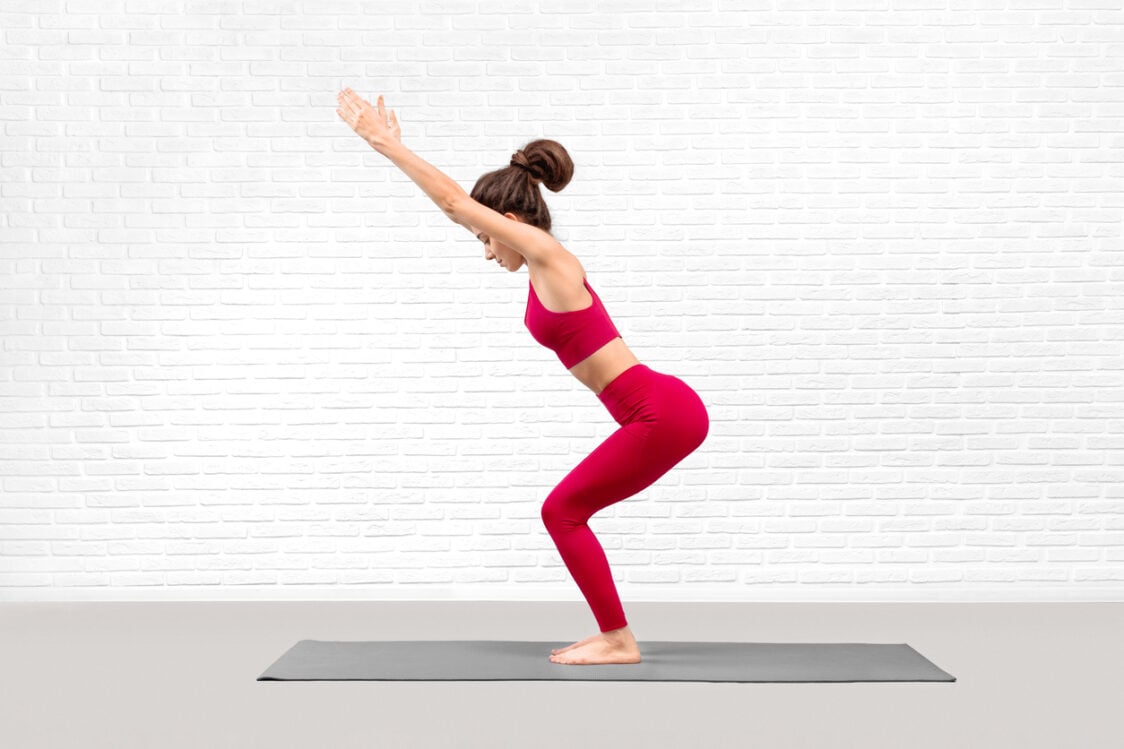
2. Vinyasa Yoga
The Vinyasa style of yoga is somewhat contrasting to Hatha yoga. While Hatha yoga focuses on alternating poses with breaks for rest, Vinyasa yoga connects poses to create a seamless sequence without pauses. That’s why it is slightly more demanding compared to Hatha yoga. At the same time, it is sufficiently flexible and includes various asanas in different sequences. Vinyasa yoga also synchronizes each movement with the breath. Breathing takes priority and acts as the main anchor for every movement. Several studies have examined the benefits of Vinyasa yoga. A study from 2021 observed 30 yogis over three months and found that Vinyasa yoga can have a beneficial impact on blood sugar and cholesterol levels. Another study states that Vinyasa yoga helps with relaxation and improves the ability to manage stress. [10]
What does practicing Vinyasa yoga look like?
A typical Vinyasa yoga session includes various asanas while standing, sitting, and lying on your back or stomach. During a group session, you may hear the instructor saying the word “Vinyasa,” which prompts you to perform a sun salutation. Interestingly, a Vinyasa yoga class doesn’t have a fixed duration, so you can find shorter sessions that last around 30 minutes. Generally, the average class duration ranges from 45 to 60 minutes. It is advisable to wear high-quality, breathable sportswear for the practice. If you have already watched how Vinyasa yoga looks and you are not a complete beginner in yoga, and you are preparing for a group class, be prepared that some asanas may still be new to you.
Generally, basic poses are often used during the practice. One example of a basic pose is the cat-cow stretch. It involves arching the spine on inhalation and rounding it on exhalation. From there, you can smoothly transition to the next pose without a pause. However, keep in mind that each movement in the sequence is coordinated with either an inhalation or exhalation. If you have never done Vinyasa before, you can try the Cobra Pose. Use a yoga mat for stability. Inhale and lie down in a Low Cobra Pose. Keep your hands still, and as you lower your hips to the ground, try to lift your chest forward. Focus on lifting your chest using the strength of your back muscles rather than relying on the pressure from your hands. Try to minimize or ideally have no weight on your hands. [9]
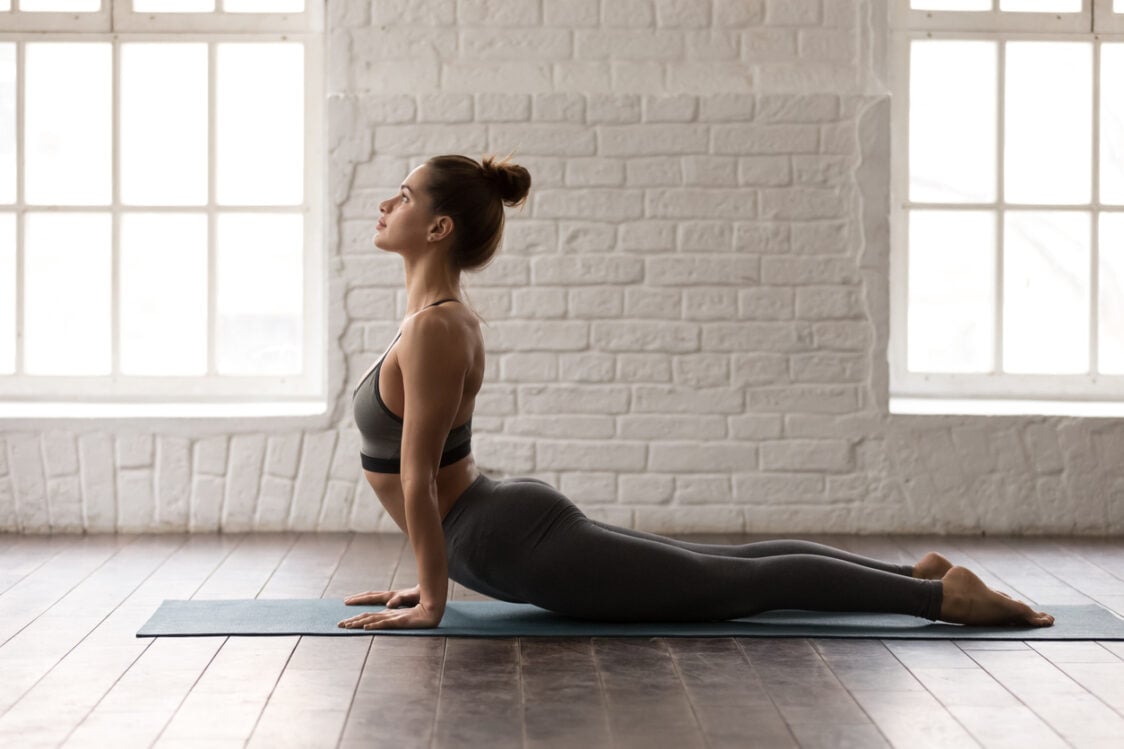
3. Ashtanga Yoga
Similarly to Vinyasa yoga, Ashtanga yoga also involves transitioning from one pose to another. However, Ashtanga stands out in that you always perform the same asanas in the same sequence, with the same number of inhales and exhales. Its name is a combination of the word “ashta” (eight) and “anga” (limbs or parts). The number eight in the name is not arbitrary; it represents a holistic system comprised of eight limbs. These limbs include:
- Yama (moral code)
- Niyama (self-discipline)
- Asana (pose/yoga exercise)
- Pranayama (controlled breathing)
- Pratyahara (detachment of the mind from distractions)
- Dharana (concentration)
- Dhyana (meditation)
- Samadhi (oneness with oneself)
The entire exercise typically lasts around 90 minutes, with each movement being guided by controlled breathing. Ashtanga yoga is highly dynamic and is often considered an athletic form of the aforementioned Hatha yoga. While it primarily focuses on physical exercise, it also promotes mental tranquility. According to a study conducted in 2017, the benefits of Ashtanga yoga for mental health in both children and adults can be experienced after as little as nine weeks of practice. [12 – 13]
What does practicing Ashtanga yoga look like?
Each session of Ashtanga yoga consists of a sequence of poses that are practiced in the same order. A typical class usually lasts for 90 minutes and always begins with ten rounds of Sun Salutations. These serve as a warm-up to get your body moving and warmed up. Additionally, be prepared to sweat during the class, so it is recommended to hydrate yourself adequately beforehand. However, according to the philosophy of Ashtanga, you should avoid drinking water during the actual practice as it is believed to extinguish your inner fire. Also, don’t be surprised if the instructor touches you during the exercise. Ashtanga yoga relies more on practical demonstrations and the hands-on assistance of the teacher rather than theoretical explanations. The instructor may help you push, pull, or bend your body into the desired positions. However, there is no need to be afraid or uncomfortable with this assistance.
The purpose of this help is to ensure that you feel good during the practice. If you prefer not to be physically touched, you can politely request the instructor to explain the poses verbally rather than physically demonstrating them. The class itself includes six different series, including primary, intermediate, and advanced series, arranged by difficulty level. For beginners, it is recommended to start with the primary series, which consists of asanas familiar from Vinyasa yoga. The difference lies in the fixed sequence that is followed and not changed. During the practice, you should let your breath guide you.
Before each asana, there is an inhale that leads you into the individual poses. Breathing becomes the primary point of focus before moving on to the next asana. However, in the beginning, don’t worry too much about selecting specific poses. Many experienced yogis recommend starting Ashtanga yoga from the very basics, which include the Sun Salutations. This will be sufficient for beginners initially. There are a total of 108 rounds of Sun Salutations, and experienced yogis perform them in six repetitions. However, beginners are advised to start with 12 rounds at first and repeat them several times. [14]

4. Kundalini Yoga
The name “Kundalini” comes from the Sanskrit word “kundal,” meaning “circular” and also referring to a coiled snake. The energy itself in this yoga type is said to be like that coiled snake. In Eastern religions, it was believed that divine energy is formed in the lower part of the spine, and similarly, Kundalini yoga works on awakening the energy within us, much like the unfolding of a snake. According to its philosophy, it does so through the activation of the seven chakras, allowing the energy to flow from the base of the spine through our body, and ultimately reaching the crown of the head. [15]
The main idea of Kundalini yoga is to increase the yogis’ self-awareness by unblocking the chakras and quieting the mind, allowing the life energy to flow freely through us. Regular practice of this type of yoga can, according to a study by Indian authors, increase serotonin production in our brain, contributing to a sense of happiness. Further research also suggests that Kundalini yoga can enhance cognitive functions, particularly memory. [16 – 17]
What does practicing Kundalini yoga look like?
A typical Kundalini yoga class consists of three parts. The first part involves chanting, followed by a short warm-up for your spine. The main practice consists of kriyas, which are sequences of postures linked with breathwork. The entire practice concludes with a final meditation or song. Each kriya, which means “action” in Sanskrit, combines physical poses with breathing or meditation. In the beginning, it is advisable to choose some of the foundational poses, such as the aforementioned Cobra pose. Another good choice would be the Warrior pose, which challenges your legs and buttocks appropriately. [15]
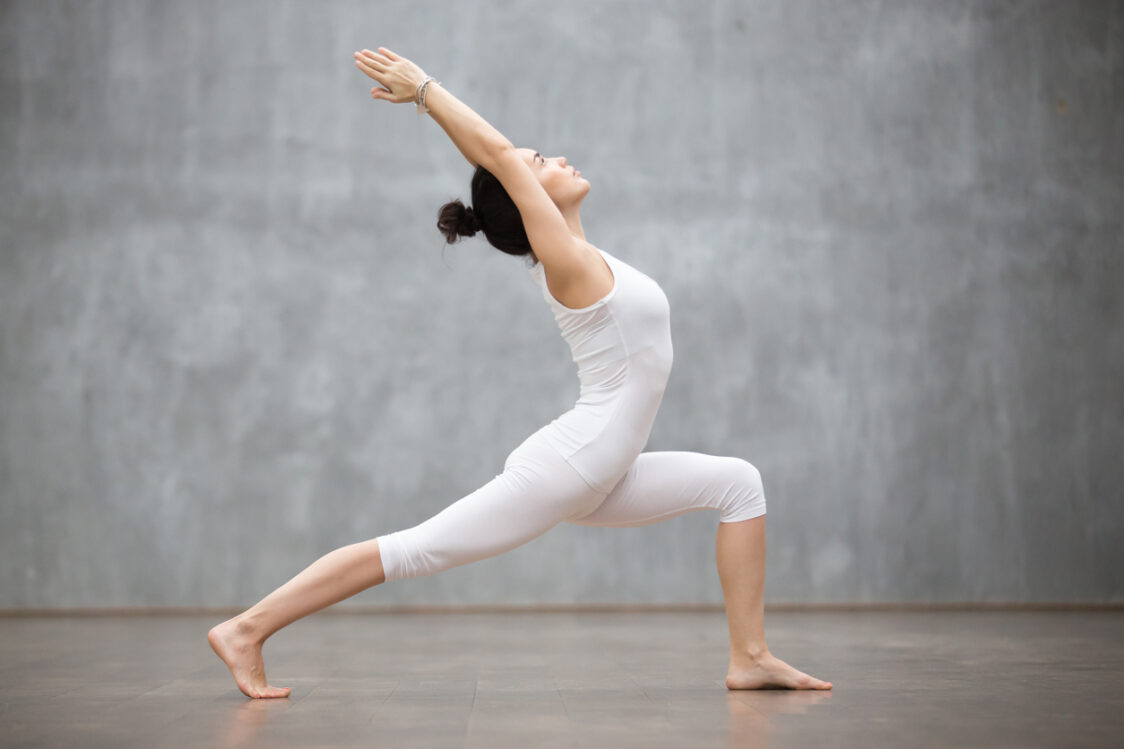
5. Bikram Yoga
Bikram yoga originated in the 1970s and was created by Indian-American guru Bikram Choudhury. The goal of this method is to enhance the benefits of traditional yoga through heat, which helps the muscles to stretch more easily. According to its founder, the heat during Bikram yoga also aids in flushing out toxins and promotes weight loss. Many people easily confuse this style with hot yoga, but the difference lies in the fact that Bikram yoga is practiced through a specific sequence of 26 asanas. These asanas are performed in a heated room at 42°C (108°F) and are repeated until the end of the class, which usually lasts about 90 minutes. The entire sequence is designed to stretch the entire body while providing the common benefits of yoga. One advantage of this style is that it always follows the same sequence of asanas in the same order, making it easier to remember them. Another benefit, as indicated by a study conducted by the NIH, is that Bikram yoga improves lower body strength and range of motion. [18 – 19]
What does practicing Bikram yoga look like?
While you can start with the aforementioned yoga styles at home, Bikram yoga is an exception. The practice requires a room with a specific temperature and humidity, typically set at 42 degrees Celsius. Therefore, it is most commonly done in a specially designed studio. If you are interested in this style, your first step should be to find Bikram yoga classes in your area. As it is a highly popular practice, it might not be as difficult as it may seem.
Another advantage is that Bikram yoga includes a precise list of 26 poses, which you can familiarize yourself with before the actual practice, so you know what to expect. The list includes poses such as Ardha Chandrasana (Half Moon Pose), Dandayamana Dhanurasana (Standing Bow Drawing Pose), and Garudasana (Eagle Pose). You can practice these individual asanas at home, and during a group class, they will be accompanied by the appropriate temperature and humidity. [20]

6. Iyengar Yoga
Iyengar yoga traces its origins back over 75 years. Its founder is the Indian guru Bellur Krishnamachar Sundararaja, better known as B.K.S. Iyengar. He believed that Iyengar yoga, due to its style, is more than just a physical discipline. He often referred to it as an art, science, and philosophy. It is accessible to all age groups and emphasizes precise timing of movements. Additionally, it incorporates the use of props that enable yogis to achieve perfect alignment in each asana.
The most notable difference from other styles is that Iyengar yoga has a globally standardized teaching system. Every instructor undergoes rigorous training to obtain an official certification. Only then can they effectively explain the technique and skilfully utilize Iyengar props. Classes taught by certified instructors feature unique sequences designed by B.K.S. Iyengar himself and guide participants through a systematic progression. Students of Iyengar yoga learn how to penetrate beyond the physical body into the inner layers of energy, spirit, and mind to attain peace, vitality, and clarity. Studies have shown that Iyengar yoga can contribute to reducing fatigue and blood pressure, as well as improving flexibility. [21 – 24]
What does practicing Iyengar yoga look like?
If you wish to practice Iyengar yoga at home, you would need to create a fluent sequence using around 200 asanas and 14 breathing techniques. For beginners, this can be a nearly impossible process. Therefore, as with Bikram yoga, it is recommended to find classes in your area taught by certified instructors. That way, you can prepare for a class that includes a meditative warm-up, standing asanas, and rejuvenating backbends. [25]
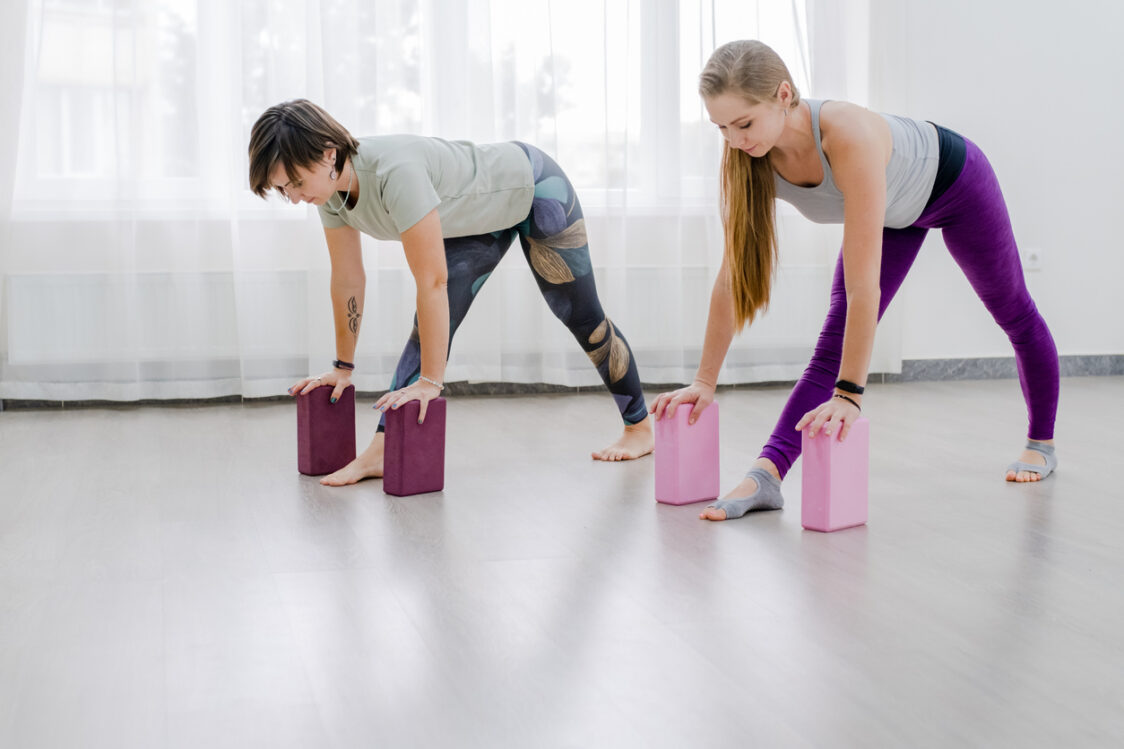
7. Power Yoga
This style of yoga, as the name suggests, challenges your fitness level. It is a form of Vinyasa yoga characterized by fast-paced sequences where you smoothly transition from one asana to another, synchronizing movement with breath. Power yoga focuses on building strength and flexibility through specific asanas. However, the actual structure and variations of Power yoga can vary. Typically, this practice emphasizes full-body training, increasing heart rate, and aiding in calorie burning.
Individual asanas can be held for up to a minute, contributing to strength building. The sequence of asanas is usually diverse and depends on the creativity of the instructor, reflecting the different forms of power yoga. The practice generally follows a progressive approach, starting with basic and simpler asanas and gradually progressing to more challenging ones. Given its nature, power yoga has been linked to the benefits of cardiovascular exercise. [26 – 28]
What does practicing Power yoga look like?
Power yoga classes are typically conducted in groups at various studios or fitness centres. They are often referred to as Vinyasa yoga, as Power yoga is one of its forms. For beginners, it is recommended to attend introductory classes before practising at home. If you have never practised yoga before, starting with Hatha yoga might be a better idea, as it is slower-paced and introduces you to individual asanas and their proper technique in a calm environment. Some basic asanas of power yoga include Chaturanga, which resembles a plank pose. [29]
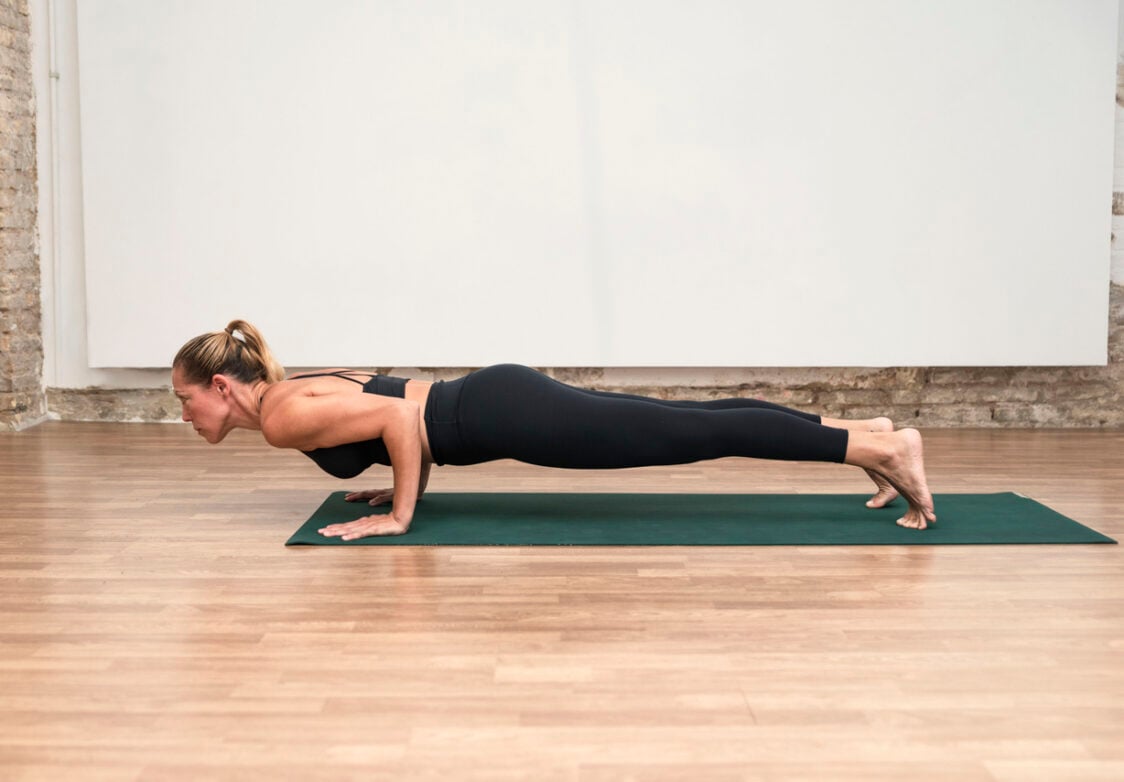
8. Prenatal Yoga
All of the previous types of yoga are suitable for both men and women, but Prenatal yoga is specifically designed for pregnant women. Its goal is to create a balance between the mental, emotional, physical, and spiritual dimensions. It also helps women prepare for childbirth by promoting relaxation of the body and mind through safe techniques and suitable asanas for all stages of pregnancy. During pregnancy, some women may feel as if their bodies are being controlled by an alien presence. This can lead to changes that feel beyond their control, causing them to feel disconnected. Prenatal yoga is one way to reconnect with the body and embrace its current state. Additionally, prenatal yoga classes provide a sense of community with other pregnant women who share the same experience and can better understand their feelings. Building new connections and friendships is just a bonus. [30]
What does practicing Prenatal yoga look like?
If you have no prior experience with yoga, practising prenatal yoga on your own is not recommended. Considering your health and the health of your baby, it’s important to seek professional prenatal yoga classes where you’ll be in good and knowledgeable hands. However, before starting any exercise program, make sure to consult with your doctor.
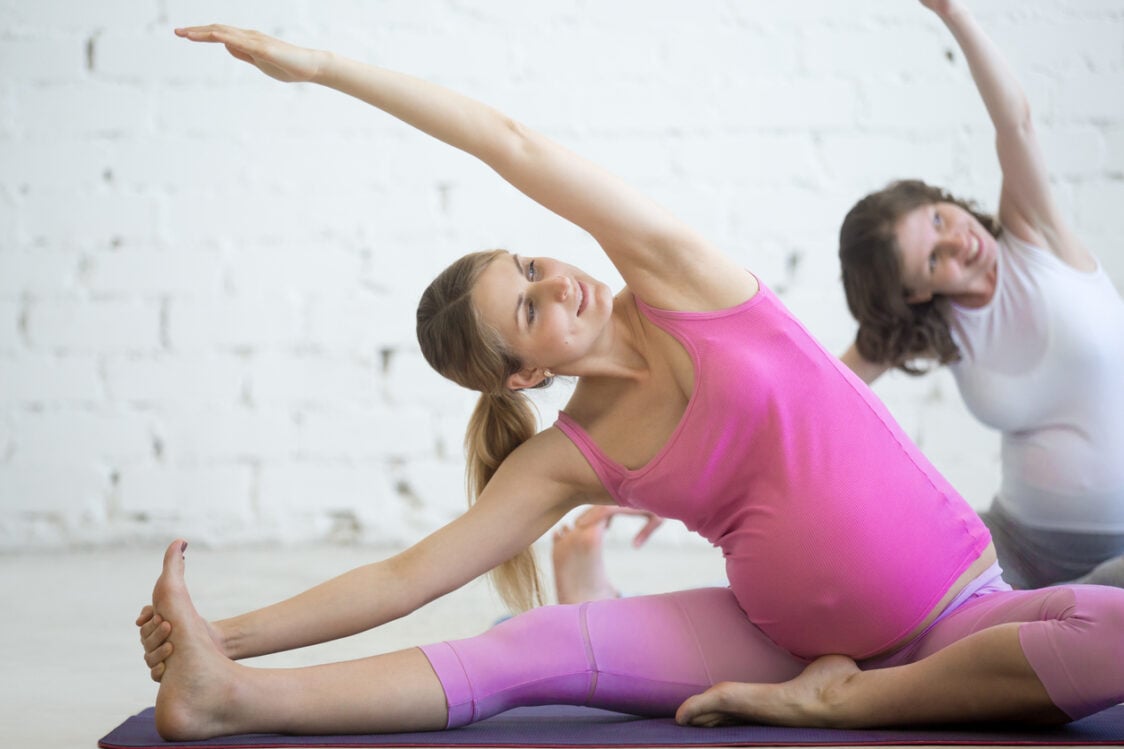
9. Yin Yoga
Yin yoga is a slow-paced style of exercise that focuses on deep connective tissues such as fascia, joints, ligaments, and bones. It tends to be a more meditative exercise and provides space for introspection. Physically, Yin yoga is characterized by longer-held asanas, with some poses lasting up to 5 minutes. This extended duration helps to stretch infrequently used tissues. It also teaches you how to breathe and be present with your thoughts. This practice is rooted in ancient Chinese philosophy and Taoist principles, which believe in the existence of energy pathways called Qi that flow through our bodies. By stretching and holding asanas according to this philosophy, the aim is to open up blockages and release energy, allowing it to flow freely. The sequence of Yin yoga is often associated with similar effects as acupuncture. The benefits of Yin yoga include improved flexibility, lengthening of fascia, and enhanced blood circulation. [31]
What does practicing Yin yoga look like?
Yin yoga doesn’t require any special conditions, so it can be easily practised anywhere, including at home. However, it may be ideal to have your initial exposure to Yin yoga in a group class where an experienced instructor can explain the basics to you. During a Yin yoga class, you can expect to engage in longer-held passive positions on the floor. It primarily targets the lower part of the body, including the hips, pelvis, inner thighs, and lower spine. The key to a successful Yin yoga practice is to hold each asana for an extended period, typically around 3 to 5 minutes or longer.
Many of the positions in Yin yoga are seated and require a forward fold. In each asana, aim to find peace and relaxation. Avoid fidgeting and carefully stretch your fascia and ligaments, but not to the point of pain. Focus on your breathing, which will provide you with a grounding point when holding a specific asana for an extended period. One typical Yin yoga position is called “Balasana“, also known as Child’s Pose. It is relatively simple and helps beginners feel the stretch in their back and hip muscles.
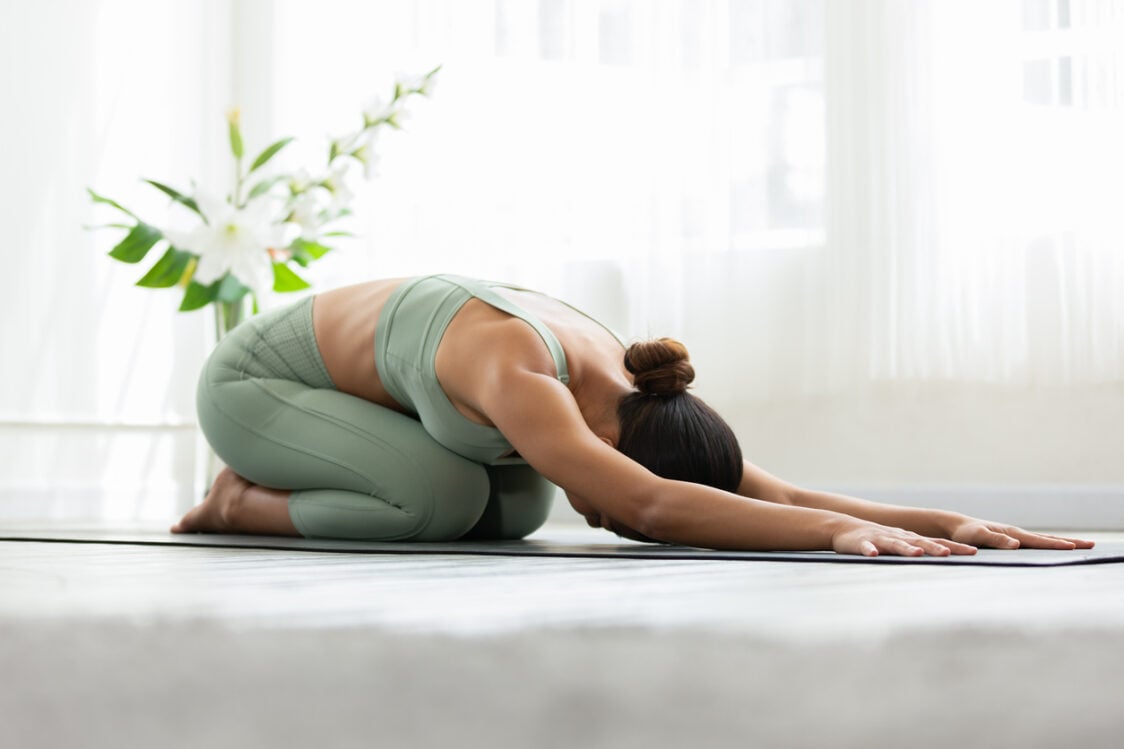
Conclusion
We believe that the previous lines have helped you gain a better understanding of the world of different yoga styles. Remember, there is no one-size-fits-all style, so you should choose the one that best suits your needs. Many of the mentioned yoga styles can be practised at home without any issues, as they only require a good mat, knowledge of specific asanas, and suitable workout attire. However, for some specific styles like Bikram and Iyengar, it is recommended to seek professional studios. Nevertheless, for beginners, it is an ideal option regardless of the type of yoga they choose.
If you’re just starting with yoga, it’s always a good idea to visit a studio and discuss individual or group classes with an instructor. Ideally, you should attend several classes until you become familiar with the basics. If you prefer practising at home, be sure to choose a reliable online yoga course that guides you through the fundamentals with high-quality videos. Regarding the type of yoga, starting with Hatha yoga is a great choice as it introduces you to the foundational asanas. All you’ll need is a good mat and the willingness to practice. From there, you can enjoy the physical and mental health benefits it offers.
[1] The Benefits of Yoga – https://osteopathic.org/what-is-osteopathic-medicine/benefits-of-yoga/
[2] Morgan Fargo - 13 types of yoga explained by the experts + how to pick the right style for you – https://www.womenshealthmag.com/uk/fitness/yoga/a25706715/types-of-yoga/
[3] Geraldine Beirne - Yoga: a beginner's guide to the different styles – https://www.theguardian.com/lifeandstyle/2014/jan/10/yoga-beginners-guide-different-styles
[4] Sendhil Kumar, Shyam Prasad, Bhavani Balakrishnan, Karunambigai Muthukumaraswamy, Mohan Ganesan - Effects of Isha Hatha Yoga on Core Stability and Standing Balance – https://pubmed.ncbi.nlm.nih.gov/27250211/
[5] Fu-Jung Huang, Ding-Kuo Chien, Ue-Lin Chung - Effects of Hatha yoga on stress in middle-aged women – https://pubmed.ncbi.nlm.nih.gov/23407338/
[6] Hatha Yoga Breathing Techniques – https://www.thesecretsofyoga.com/Hatha-Yoga/hatha-breathing-awareness.html
[7] Kaitlin Vogel - 10 Types of Meditation and How to Do Them – https://psychcentral.com/health/types-of-meditation#transcendental
[8] Teresa Adele - A Beginner’s Guide to Hatha Yoga: Learn All About This Foundational Yoga Format – https://youaligned.com/everything-hatha-yoga/
[9] Ann Pizer - Introduction to Vinyasa Yoga – https://www.verywellfit.com/introduction-to-vinyasa-flow-yoga-4143120
[10] Alexander A. Piña, James Shadiow, A. Tobi Fadeyi, Anabel Chavez, Stacy D. Hunter - Alexander A. Piña, James Shadiow, A. Tobi Fadeyi, AThe acute effects of vinyasa flow yoga on vascular function, lipid and glucose concentrations, and mood – https://www.sciencedirect.com/science/article/pii/S0965229920318525?via%3Dihub
[11] Kimberly Tay, Linda Baldwin - Effects of Breathing Practice in Vinyasa Yoga on Heart Rate Variability in University Students- A Pilot Study – https://www.longdom.org/open-access/effects-of-breathing-practice-in-vinyasa-yoga-on-heart-rate-variability-inuniversity-students-a-pilot-study-2157-7595-1000214.pdf
[12] Timothi Burgin - Ashtanga Yoga: Definition, Principles, Practices & History – https://www.yogabasics.com/learn/ashtanga-yoga/
[13] Benjamin Richard Smith - Body, Mind and Spirit? Towards an Analysis of the Practice of Yoga – https://journals.sagepub.com/doi/10.1177/1357034X07077771
[14] Tara Styles - HOW TO PRACTICE ASHTANGA YOGA: A BEGINNER’S GUIDE – https://www.uluyoga.com/how-to-practice-ashtanga-yoga-a-beginners-guide/
[15] Amanda Tarlton - What Is Kundalini Yoga? Everything You Need To Know About This Celebrity-Favorite Practice – https://www.mindbodygreen.com/articles/kundalini-yoga-101-everything-you-wanted-to-know
[16] Sanjenbam Kunjeshwori Devi - Mental depression and Kundalini yoga – https://www.researchgate.net/publication/224898793_Mental_depression_and_Kundalini_yoga
[17] Harris A. Eyre,1,2,3,4 Prabha Siddarth,1 Bianca Acevedo a kol. - A randomized controlled trial of Kundalini yoga in mild cognitive impairment – https://www.ncbi.nlm.nih.gov/pmc/articles/PMC5540331/
[18] Zoe L. Hewett, Birinder S. Cheema, Kate L. Pumpa, Caroline A. Smith - The Effects of Bikram Yoga on Health: Critical Review and Clinical Trial Recommendations – https://www.ncbi.nlm.nih.gov/pmc/articles/PMC4609431/
[19] Tia Ghose - What is Bikram Yoga? – https://www.livescience.com/42322-bikram-yoga.html
[20] BIKRAM YOGA: WHAT IS IT AND WHAT ARE THE BENEFITS? – https://www.diyogi.com/blogs/diyogi-yoga-mat-articles-info/bikram-yoga-what-is-it-and-what-are-the-benefits
[21] What is Iyengar Yoga? – https://iynaus.org/what-is-iyengar-yoga/
[22] Maria Jose-Santana - An assessment of the effects of Iyengar yoga practice on the health-related quality of life of patients with chronic respiratory diseases: A pilot study – https://www.ncbi.nlm.nih.gov/pmc/articles/PMC3630052/
[23] Debbie L. Cohen, LeAnne T. Bloedon, Rand L. Rothman - Iyengar Yoga versus Enhanced Usual Care on Blood Pressure in Patients with Prehypertension to Stage I Hypertension: a Randomized Controlled Trial – https://www.ncbi.nlm.nih.gov/pmc/articles/PMC3145370/
[24] Daniel James Amin - The effects of selected asanas in Iyengar yoga on flexibility: Pilot study – https://www.sciencedirect.com/science/article/abs/pii/S1360859213001903
[25] Amanda Tarlton - Iyengar Yoga 101: What Is It, Health Benefits & How To Practice – https://www.mindbodygreen.com/articles/iyengar-yoga-101-what-is-it-health-benefits-and-how-to-practice
[26] Sandra Carson - What is Power Yoga? – https://www.ekhartyoga.com/articles/practice/what-is-power-yoga
[27] Matthew M Schubert, Amy S Clark, Annie B De La Rosa, Sean C Newcomer - Heart rate and thermal responses to power yoga – https://pubmed.ncbi.nlm.nih.gov/30057050/
[28] The (Many) Benefits of a Cardio Workout https://health.clevelandclinic.org/the-many-benefits-of-a-cardio-workout/
[29] James Roland - How Does Power Yoga Differ from Traditional Yoga? – https://www.healthline.com/health/what-is-power-yoga#getting-started
[30] Ana Pizer - A Complete Guide to Prenatal Yoga – https://www.verywellfit.com/pregnancy-yoga-4013139
[31] Amanda Tarlton - Yin Yoga 101: Everything You Need to Know About This Deep, Meditative Practice – https://www.mindbodygreen.com/articles/guide-to-yin-yoga
[32] Jenny McCoy - 11 Things to Know Before Your First Vinyasa Yoga Class – https://www.self.com/story/vinyasa-yoga


Add a comment